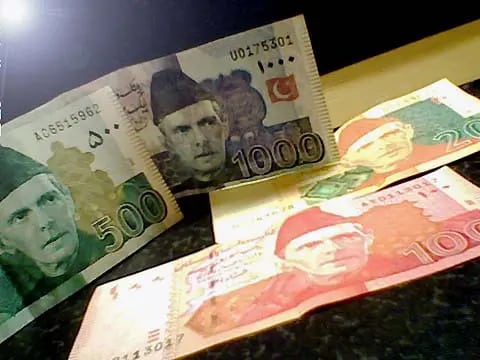The Pakistani rupee (PKR) is more than just a medium of exchange. Its history, significance, and unique characteristics make it a fascinating topic. Whether you’re traveling to Pakistan or sending money home to loved ones, understanding the rupee can help ensure smooth financial transactions. Here, we present some essential facts and lesser-known historical details about the currency of Pakistan.
Pakistani Rupee 101
The Pakistani rupee is the country’s official currency, issued and regulated by the State Bank of Pakistan. Unlike many other currencies that divide into smaller units like cents or pence, the rupee’s smallest denomination is one rupee.
Here are some quick facts about the currency:
- Currency Code: PKR
- Abbreviation: Rp or Rs
- Available Coins: 1, 2, 5, 10, 20, 50
- Banknotes in Circulation: 10, 20, 50, 100, 500, 1,000, and 5,000
The State Bank of Pakistan modernized its currency designs in 2008, adding a 5-rupee coin to replace the 5-rupee banknote. Pakistan also uses unique terms to denote larger denominations:
- Lakh is 100,000 rupees.
- Crore is 10 million rupees.
- Arab is 1 billion rupees.
- Kharab is 100 billion rupees.
A Brief History of Pakistan’s Currency
Like the nation itself, the Pakistani rupee has a dynamic history rooted in the subcontinent. Before 1947, Pakistan used the Indian rupee as part of British India. Upon independence, the new country faced the immediate challenge of creating a banking system and currency.
Until Pakistan established the State Bank of Pakistan in 1948, the Reserve Bank of India circulated temporary notes stamped “Government of Pakistan.” Later that year, Pakistan issued its own currency in denominations of 1, 2, 5, 10, and 100 rupee notes.
Over time, the rupee’s design evolved to include watermarks, unique colors, and security threads to prevent counterfeiting. However, older banknotes were eventually removed from circulation. For example, the State Bank stopped accepting outdated designs on December 31, 2021, as part of efforts to modernize Pakistan’s currency system.
Initially pegged to the British pound, the rupee experienced significant depreciation when it was unpegged in 1981. This depreciation was exacerbated by economic challenges such as trade deficits and low foreign investment.
For those interested in the rupee’s history, the Money Museum of Pakistan in Karachi offers an extensive exhibit chronicling its evolution.
The Pakistani Rupee Exchange Rate
The exchange rate between the Pakistani rupee and other global currencies fluctuates frequently, influenced by economic factors like inflation and trade deficits. If you plan to exchange foreign currency for rupees, you can do so at airports, banks, or local currency exchange counters.
Some of the most commonly exchanged currencies for PKR include:
- U.S. dollars (USD)
- Euros (EUR)
- British pounds (GBP)
- Australian dollars (AUD)
- Canadian dollars (CAD)
5 Interesting Facts About Pakistan’s Currency
1. “Rupee” Has Ancient Roots
The word “rupee” derives from the Sanskrit term “rūpyakam,” which means “coin of silver.” References to the term date back to the 4th century BCE, long before the currency as we know it existed. Today, the rupee is used not just in Pakistan but in several other South Asian countries as well.
2. The Rupee Originated in the Mughal Empire
Sher Shah Suri, a 16th-century Afghani king, introduced the first coins officially called “rupee” during his rule over the Mughal Empire. The name and idea persisted through colonial times and into modern Pakistan.
3. Pakistan’s First Currency Was Printed in India
At its inception, Pakistan relied on India’s printing presses for its currency. To denote the difference, the notes were marked with “Government of Pakistan.” By 1948, Pakistan established the capacity to issue its own rupee.
4. Early Banknotes Were Bilingual
During its early years as a nation, Pakistan included both Urdu and Bengali text on its currency to represent West Pakistan and East Pakistan. After East Pakistan gained independence as Bangladesh in 1971, the country transitioned to Urdu-only currency designs.
5. Special Hajj Notes Were Issued for Pilgrims
From the 1950s to 1978, the State Bank of Pakistan printed special “Hajj notes” to assist pilgrims traveling to Saudi Arabia. These acted like travelers’ checks and are now prized by collectors.
Beyond Currency
The Pakistani rupee carries more than monetary value. It connects millions of people worldwide to their families and their heritage. Its unique history reflects the resilience, diversity, and evolution of the country itself.
